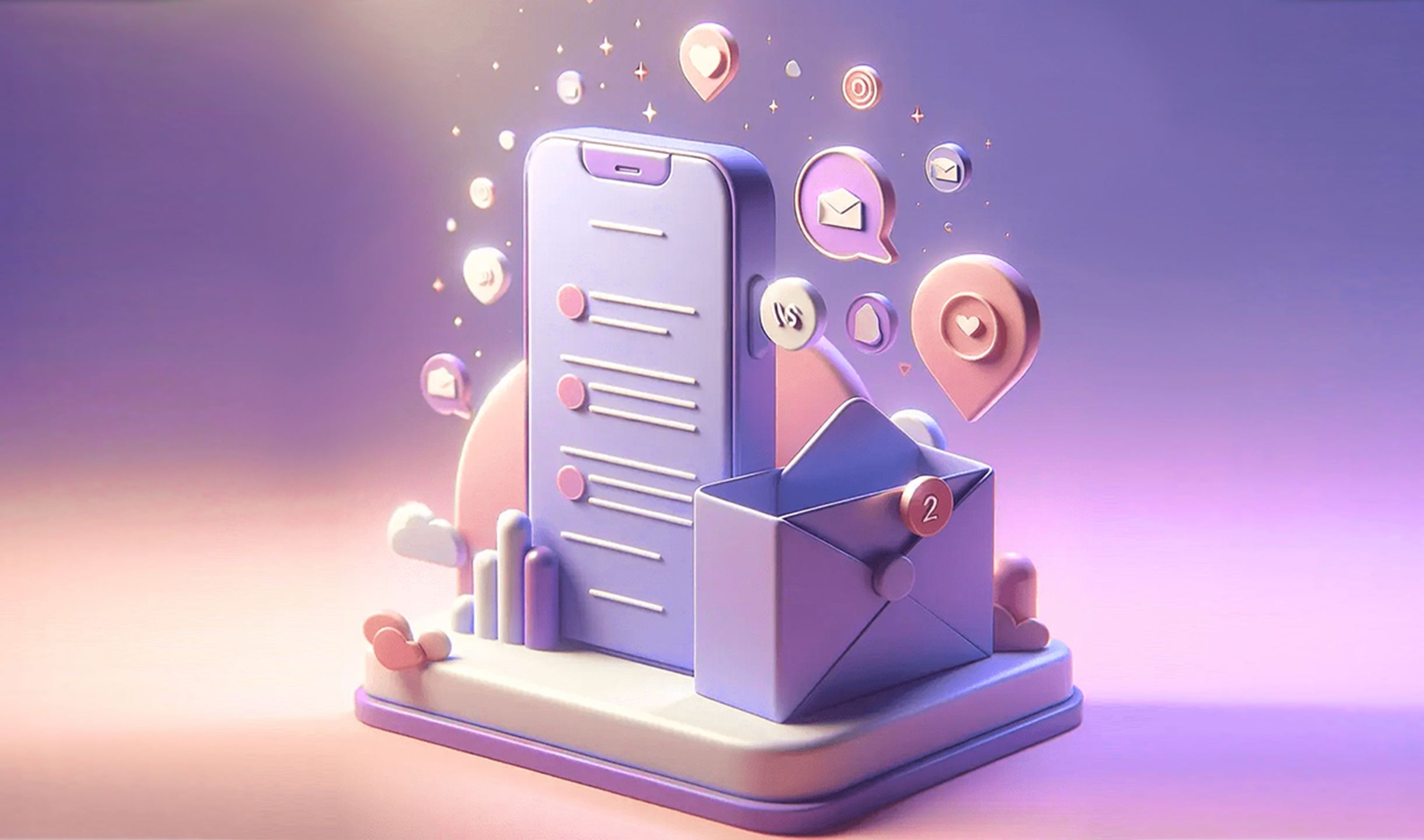Mobile Push vs Email Marketing: A Marketer’s Guide

Mobile push notifications and email marketing offer unique benefits and challenges that can significantly impact your marketing strategy. This blog post will explore the key differences between push notifications and email marketing, providing marketers, CEOs, and developers with critical insights to optimize their campaigns.
Delivery and Open Rates
Mobile Push:
Push notifications are instantly delivered to users' devices, whether mobile phones or desktops. This immediacy often translates to higher open rates. According to industry data, push notifications boast an average open rate of 20-30%, significantly higher than email.
Email Marketing:
Email marketing, while not instantaneous, reaches a broad audience through their inboxes. However, the average email open rate hovers around 15-25%. Factors such as spam filters and crowded inboxes contribute to these lower rates.
Push notifications' direct delivery mechanism provides an immediate call to action, potentially increasing user engagement. On the other hand, emails allow for more thoughtful engagement, giving recipients time to process the content before taking action.
Content and Interactivity
Mobile Push:
Push notifications are succinct and attention-grabbing. They are ideal for time-sensitive information, reminders, or quick updates. However, their brevity limits the amount of content that can be delivered.
Email Marketing:
Emails offer a rich canvas for detailed content, including text, images, videos, and hyperlinks. This medium allows for storytelling, in-depth product information, and comprehensive marketing campaigns. Additionally, emails can facilitate interactive elements such as surveys, personalized offers, and feedback forms.
While push notifications can include interactive elements like buttons or quick replies, emails provide a broader scope for user interaction. The richness of email content can lead to higher user engagement over time.
Timing and Engagement
Mobile Push:
Timing is crucial for push notifications. Sending them during peak hours can significantly impact engagement rates. However, too many notifications can lead to user fatigue and opt-outs.
Email Marketing:
Emails provide flexibility in timing and frequency. Marketers can automate emails to target users at optimal times based on behavior and preferences. Engagement metrics for emails often show steady interaction over longer periods compared to the immediacy of push notifications.
Push notifications are most effective when used sparingly and strategically, such as for urgent updates or limited-time offers. Emails are better suited for regular communication, newsletters, and detailed promotions requiring more extended engagement.
Use Cases
Mobile Push:
- Push notifications' direct delivery mechanism provides an immediate call-to-action ideal for notifying users about time-sensitive events, such as flash sales or breaking news.
- Reminders: Great for appointment reminders, event notifications, and re-engaging inactive users.
- Location-Based Offers: Effective for delivering personalized offers based on users' real-time location.
Email Marketing:
- Newsletters: Perfect for sharing company news, blog updates, and curated content.
- Promotional Campaigns: Suitable for detailed product launches, seasonal sales, and special promotions.
- Customer Nurturing: Excellent for drip campaigns, onboarding sequences, and personalized recommendations.
Integration and Best Practices
To leverage the strengths of both channels, consider integrating push notifications and email marketing into a cohesive communication plan. For instance, use push notifications for urgent alerts and follow up with a detailed email for further engagement. Here are the examples of commonly adopted practices:
- Segmentation: Segment your audience based on behavior, preferences, and demographics to deliver tailored messages through both channels.
- Personalization: Use personalization tokens and dynamic content to make your messages relevant and engaging.
- A/B Testing: Continuously test different content, timing, and delivery methods to optimize performance.
- Frequency Control: Balance the frequency of push notifications and emails to avoid overwhelming your audience.
Conclusion
Understanding the key differences between mobile push notifications and email marketing is crucial for any modern marketer. Both channels offer unique advantages and can complement each other when used strategically. Recognizing their strengths and tailoring your approach can enhance engagement, boost conversions, and drive long-term success.
Are you looking for a user-friendly push notification service to improve your business's conversion rate? Click the link below to learn more!


